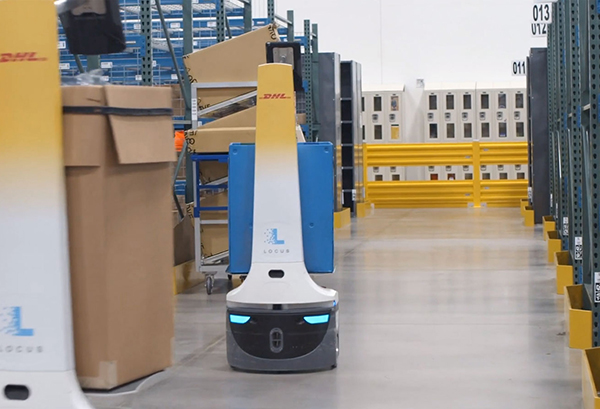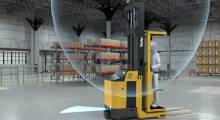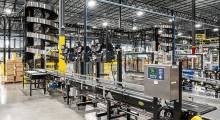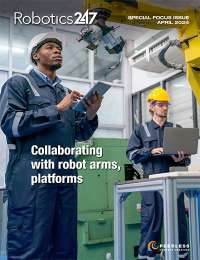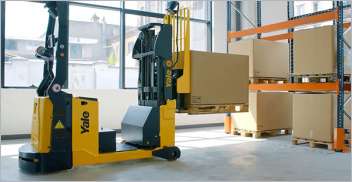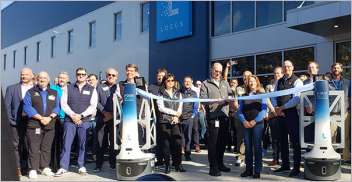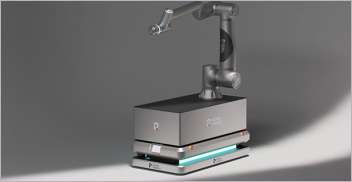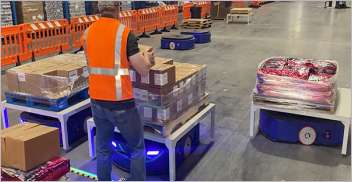The end-to-end supply chain is a critical part of today's globally competitive enterprise. Shipments get sorted, packaged, and loaded for delivery, ultimately making their way to customers. Within these processes, there are many moving parts, and robots can improve the efficiency of many of these functions.
Whether they work alongside people or relieve them to do other value-added tasks, tireless robots have matured in the past few years to be an intrinsic part of many logistics operations, from the dock to the destination.
What can robots do in modern supply chains?
With advances in perception, manipulation, and mobility, groups of robots can increasingly do the heavy lifting in warehouses, fulfillment centers, and distribution centers. Here are some noteworthy examples of how robots can provide returns on investment:
- Picking and packing: Robots can now pick items from shelves, package them, and take them to the parking lot. FANUC, which claims to be the world's largest maker of industrial robots, has already produced machines that can pick and package virtually any product. Footwear company Crocs credited 6 River Systems' Chuck mobile robots for helping it meet increased demand during the pandemic while also increasing output. Crocs' managers said the use of Chucks led to fewer errors and greater efficiency.
- Lift heavy loads: The warehouse race is on, and warehouse managers are looking for ways to automate their processes. One way they're doing this is by using robots that can lift heavy items. FANUC has produced robots that can lift cars. Last December, Vecna Robotics unveiled its next-generation autonomous counterbalanced fork truck, which can lift heavy loads up to 12 feet.
- Moving shelves: Amazon.com acquired Kiva Systems in 2012 and uses robots to move shelves in its warehouses, eliminating the need for humans to do this tedious and error-prone job. Amazon warehouses are filled with small orange robots made by subsidiary Amazon Robotics, and one person monitors them.
- Archive management: Not only can robots manage bins, corrugated cartons, and pallet loads; they can also manage paper files and archives. They can sort, scan, and organize documents in ways that would be difficult for humans to do. For example, the FBI uses a squad of wheeled robots to file away millions of paper records from its 256,000-sq.-ft. facility near Washington, D.C.
- Integrating technologies: As more warehouse and logistics environments incorporate robots for all these tasks, there will start to be environments using systems from multiple vendors. Those technologies need to be able to communicate with one another and enterprise systems for interoperability and efficiency. Organizations are addressing the issue, and a software ecosystem is growing to meet this need. Global shipping company DHL, for instance, has collaborated with Microsoft and AI-driven fulfillment provider Blue Yonder to integrate warehouse robots. DHL's initial implementation of the system was in a Madrid warehouse, where the company said it saved integration time by 60%.
What’s driving the rapid of adoption of automation?
Companies have cited different reasons for implementing robotics and automation in their warehouses. The following are the most common ones:
- Economics: Robotics can reduce labor costs, work around the clock, and add precision to certain tasks. The robotics-as-a-service (RaaS) model enables companies to pay for hardware, software, and services as an operational expense rather than an upfront purchase.
- Increase productivity: Robots may take up less space than human workers or human-driven vehicles, which is crucial when warehouses are running at capacity. In goods-to-person applications, well-managed workflows can combine human flexibility with robotic precision for greater throughput. Some warehouse managers have reported a significant boost in productivity.
- Safety: Warehouse workers often face repetitive stress, extreme temperatures, and even high-voltage environments. Forklifts are involved in numerous accidents. Robots and automation are ideal for tasks such as material handling.
What's ahead for robots in warehouses?
In the past year, partly because of accelerated e-commerce demand during the COVID-19 pandemic, robotics has rapidly moved from trials to deployment in warehouses. This trend will likely continue. Manufacturers such as Nimble Robotics are investing heavily in this market, and industry analysts predict that autonomous mobile robots (AMRs) alone will be worth $6.8 billion in 2025.
Increasingly sophisticated machine learning algorithms enable robots to rapidly identify objects. Thanks to lidar and infrared sensors, they can perceive items in superhuman ways rather than rely on sight or touch alone.
Speaking of touch, robot suppliers have studied and applied human-machine interaction lessons, with touchscreens rather than buttons and systems such as Veo Robotics' that slow robots to safe speeds when they sense people are in proximity.
In addition, remote telepresence and teleoperation capabilities allow for human robotics experts to troubleshoot and resolve edge cases and reduce downtime.
The march of automation isn't inevitable or universally welcomed, however. Managers should watch for “automation anxiety,” where workers fear that robots will endanger their jobs. However, contrary to some widely circulated reports, supply chain operations are so short-handed, and the need for both skilled labor and robots is still so great, that all parties to automation have a responsibility to better educate shareholders, employees, and other stakeholders about its potential.
As Markus Voss, a global manager at DHL, said about the future: “The aim is not to replace employees over time, but to assign the more attractive and interesting tasks to our human workforce.”
About the Author
Follow Robotics 24/7 on Linkedin
Article topics
Email Sign Up

